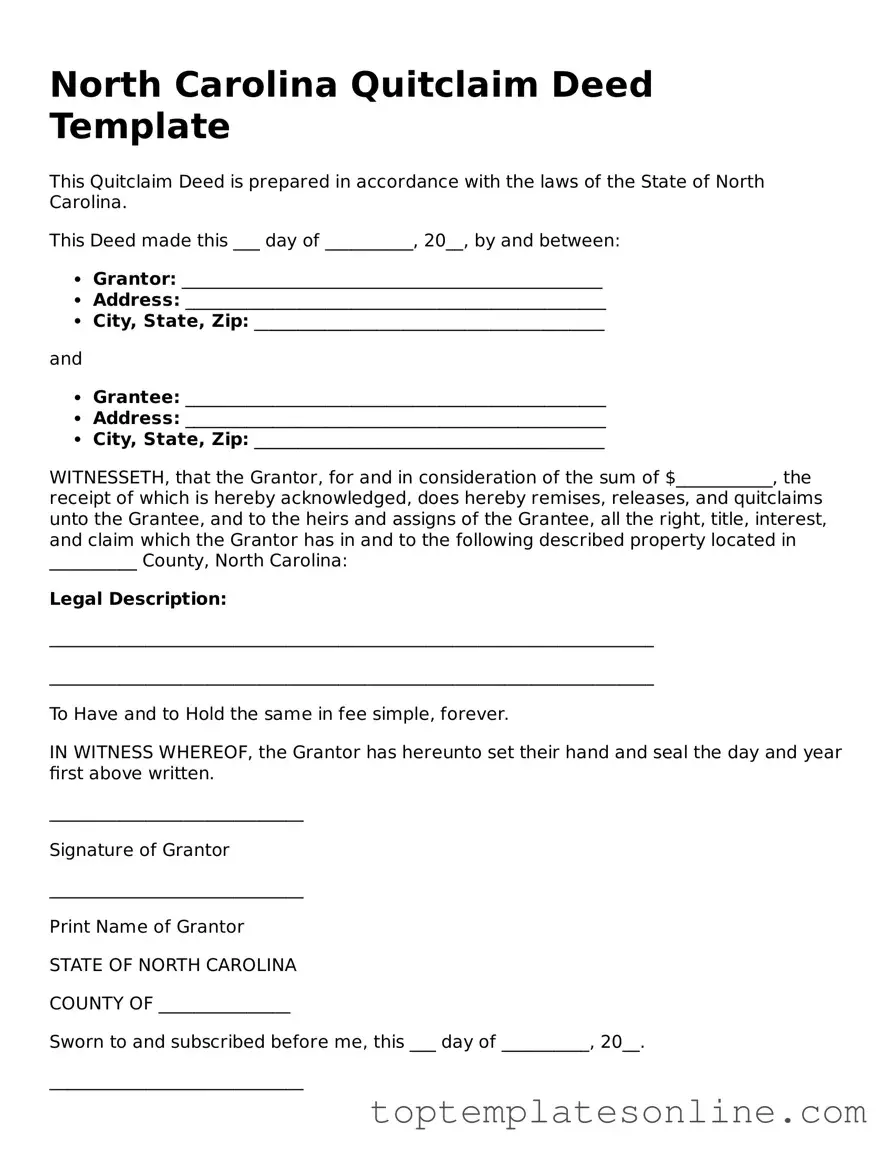The North Carolina Quitclaim Deed is an important legal document that facilitates the transfer of property rights from one party to another. This form is particularly useful when the grantor, the person transferring the property, wishes to convey their interest without making any guarantees about the property’s title. Essentially, it allows individuals to relinquish their claim to a property, making it a straightforward option for situations such as transferring property between family members or clearing up title issues. The document typically includes essential details such as the names of the grantor and grantee, a description of the property, and the date of the transfer. While it does not provide warranties or assurances about the property’s condition or title, it serves as a formal acknowledgment of the transfer. Understanding the Quitclaim Deed is crucial for anyone involved in property transactions in North Carolina, as it outlines the rights and responsibilities of the parties involved, ensuring a clear and efficient transfer process.
